How to Plant Climbing Roses Successfully
Climbing roses possess long canes that are ideal for trailing on various structures such as pillars, fences, arbors, and gazebos. They display either large, solitary flowers or clustered blooms on a single stem. To encourage abundant blooming, climbers can be trained to grow horizontally by loosely anchoring their canes to a support structure. This technique is particularly effective for young plants, as it stimulates their climbing tendencies.
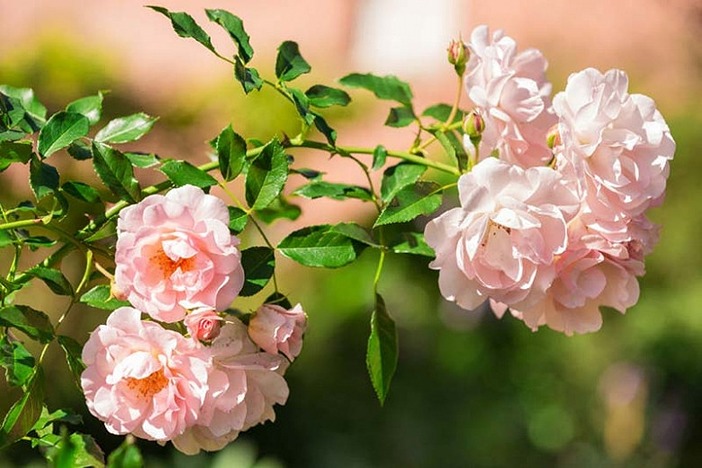
Climbing roses gracefully meander over arbor gates, fences, and charming brick facades, effortlessly creating a cottage-like atmosphere. Despite their initial intimidating appearance, these elegant flowers are actually easy to cultivate and maintain
The climbing rose, scientifically known as Rosa, is a versatile and impressive plant that belongs to the rose family. It is characterized by its ability to climb and develop long canes. Climbing roses can reach a height range of 3 to 20 feet and a width spanning from 1 to 6 feet. They produce large, single flowers or clustered blooms on a stem, with a wide range of colors including blue, orange, pink, red, white, and yellow. The foliage of climbing roses typically exhibits a beautiful blue-green hue. These roses are known for their special features such as attracting birds and emitting a delightful fragrance.
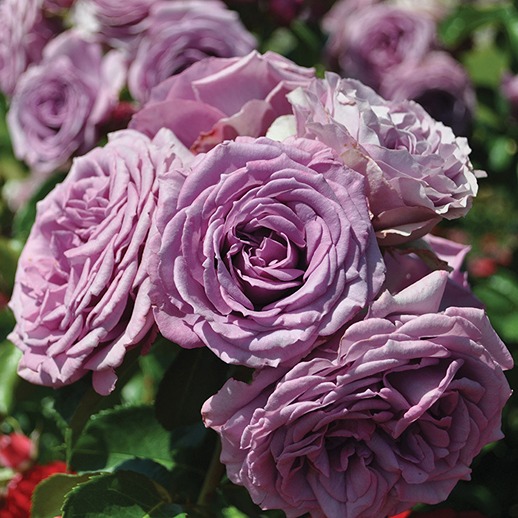
Bloom and Care of Climbing Roses
Climbing roses offer a captivating display of blooms throughout the growing season. They tend to have one heavy bloom in spring, followed by sporadic blooms during the rest of the season. The frequency and abundance of blooms depend on the variety planted. Regular deadheading of flowers can encourage continuous blooming. Pruning plays a crucial role in promoting healthy growth and maximizing blooms. It is recommended to prune climbing roses in winter before the initial bloom to increase the number of blooms later on. Climbing roses require full sun exposure for most of the day and well-draining soil that is rich and loamy. Adequate watering, fertilization, and protection from extreme temperatures are essential for their care.
The blooming pattern of climbing roses typically involves a substantial burst of flowers during spring, followed by sporadic blooms throughout the rest of the growing season. The frequency of blooming depends on the specific variety planted. Regularly removing faded flowers, a process known as deadheading, can encourage continuous blooming. Additionally, pruning the plants in winter before their initial bloom can significantly increase the number of blooms produced later on. These perennial plants are hardy and can thrive in a wide range of climates, spanning from Zone 4 to Zone 11.
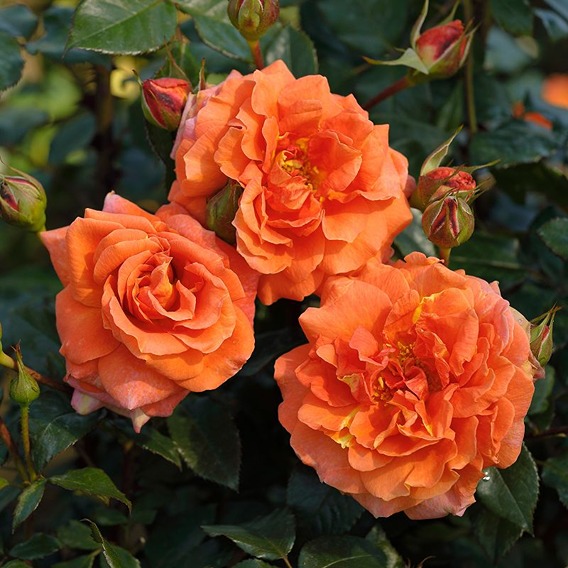
Where to Plant Climbing Roses
Determining the ideal planting location for climbing roses requires attention to their support needs and sufficient space for healthy growth. These roses do not climb in a vine-like manner and cannot support themselves, necessitating the assistance of gardeners who must tie the roses to a support structure at multiple points.
Climbing roses thrive when planted in areas that receive abundant sunlight throughout most of the day. They require well-draining soil that is both rich and loamy. If the existing soil quality is subpar, it can be improved by incorporating compost or other organic materials before planting.
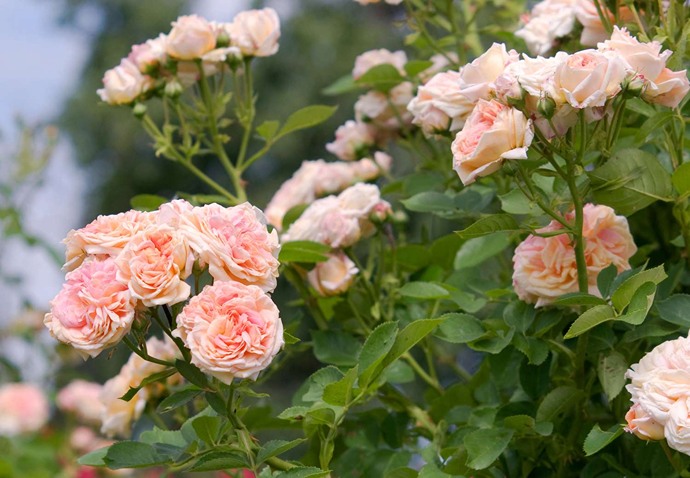
Planting and Support for Climbing Roses
To plant climbing roses, a suitable support structure such as a trellis, arbor, pergola, or fence is necessary. These roses require ample space to spread out and good airflow to stay healthy. Unlike vines, climbing roses cannot support themselves and need to be tied to a support at multiple points. It is important to plant them in a location that receives full sun exposure. The soil should be well-draining and can be amended with compost or organic material if needed. Planting bare-root roses in late winter or early spring when the soil is not frozen or soggy allows the roots to establish before the summer months. Training the rose to the support structure should be done early on, using soft ties such as natural jute twine. Providing some space between the plants and a hard, smooth surface promotes good airflow and encourages healthy growth.

How and When to Plant Climbing Roses
For optimal results, climbing roses are best started as bare-root plants. Planting should be done during late winter or early spring when the soil is neither frozen nor excessively damp from winter snow. This timing allows the roots to establish themselves before the arrival of the hot summer months. Bare-root plants easily adapt to new soil conditions, as they are not being transplanted from other mediums.
It is advisable not to delay the process of training the roses to their support structures, as the stems can become rigid and difficult to work with over time. In most cases, using natural jute twine or a similar soft material for simple ties is sufficient. However, when training roses against a solid surface or wall, it is necessary to install a trellis or support system a few inches away from the structure. Without support, climbing roses are unable to ascend smooth surfaces. Leaving some space behind the plants promotes proper airflow, which is essential for their overall health.
In cases where the planting area’s soil lacks proper drainage, amending it with compost or well-rotted organic matter is recommended. Before planting a bare-root rose, soak its roots in water for a couple of hours. Dig a hole measuring approximately 18 inches by 18 inches and create a soil mound at the hole’s base. Position the rose in a way that allows its roots to spread loosely over the mound, ensuring that the graft is level with the soil. Fill the hole with soil and lightly press it down with your hands. Finally, water the plant.
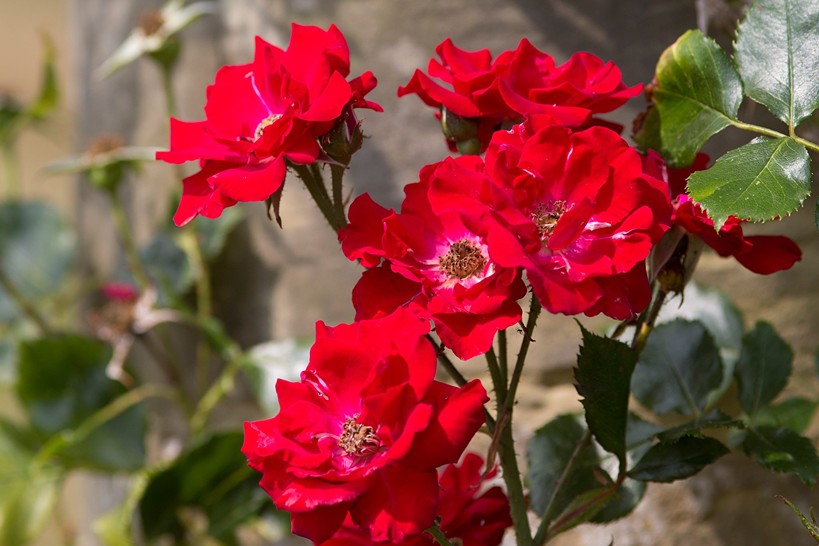
Climbing Rose Care Tips
Caring for climbing roses involves similar practices to those employed for regular rose bushes.
1. Light
Climbing roses tolerate some shade but achieve their best performance when exposed to full sun for four to six hours daily, resulting in larger and fuller flower clusters.
2. Soil and Water
These roses thrive in rich, loamy soil. If the existing soil quality is inadequate, it can be enhanced by incorporating fertilizer or compost. Climbing roses prefer moist soil with a neutral to alkaline pH and necessitate well-draining conditions. Typically, they require around 2 gallons of water per plant each week, although overwatering should be avoided to prevent root rot.
3. Temperature and Humidity
Climbing roses flourish in temperatures ranging from 50ºF to 80ºF. When temperatures exceed 80ºF, providing afternoon shade protects them from excessive heat. Similarly, if temperatures drop below 32ºF, providing coverage or protection becomes necessary. However, it is important not to cover the roses too early in the season. Waiting until the first frost is advisable.
4. Fertilizer
When initially planting climbing roses, incorporating compost into the soil is recommended. Once the plants are established, using a balanced fertilizer every two to three weeks, following the manufacturer’s instructions, is beneficial. As the weather cools, it is advised to stop fertilization approximately eight weeks before the first frost date to prevent new growth that may be susceptible to cold damage.
5. Pruning
After a year or two of establishment, regular pruning of climbing roses can commence. Generally, pruning is required only once a year, after the first major bloom. During this time, diseased or damaged canes can be addressed, and pruning cuts can be made to improve airflow and direct future growth. Pruning rose bushes in the fall should be avoided since it stimulates new growth that may not withstand winter conditions.
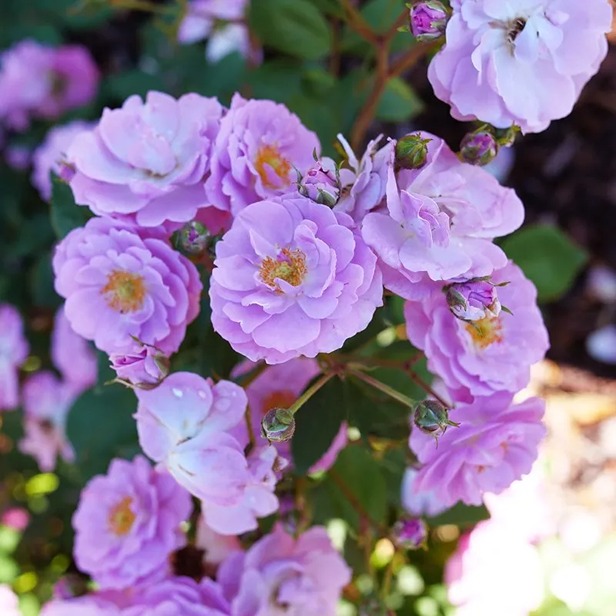
Potting and Repotting Climbing Roses
Climbing roses can also be successfully grown in pots. When planting in pots, it is crucial to select a sizeable container, preferably with a capacity of seven to ten gallons, as climbing roses grow vigorously and require ample space to spread upwards and outwards. Similar to garden roses, potted climbing roses require adequate support. For smaller varieties, a small trellis inserted into the pot during planting can provide support. However, for standard-sized roses, planting them adjacent to a trellis or fence is preferable to avoid the top-heavy nature of pots.
When potting climbing roses, a mixture of peat moss, potting soil, and mulch should be used, filling the pot halfway. The rose should be planted in a way that keeps the bud union (where the cane meets the roots) approximately 2 inches below the top of the soil. Regular watering or the installation of a drip irrigation system is necessary to maintain moist soil conditions.
Pests and Problems
Proper disease prevention is crucial for the health of climbing roses, as with any other rose variety. Cleaning up any leaf debris from previous years’ growth in the spring is essential, as it promotes airflow and sunlight exposure, minimizing the risk of fungal infections. Various fungal pathogens pose the main threat to roses.
Additionally, climbing roses are susceptible to a range of pests, including aphids and Japanese beetles. Treating these pests is relatively straightforward and can be accomplished by using insecticidal soap or manually removing them and submerging them in soapy water. Alternatively, a strong water spray can be employed to dislodge them from the plants.
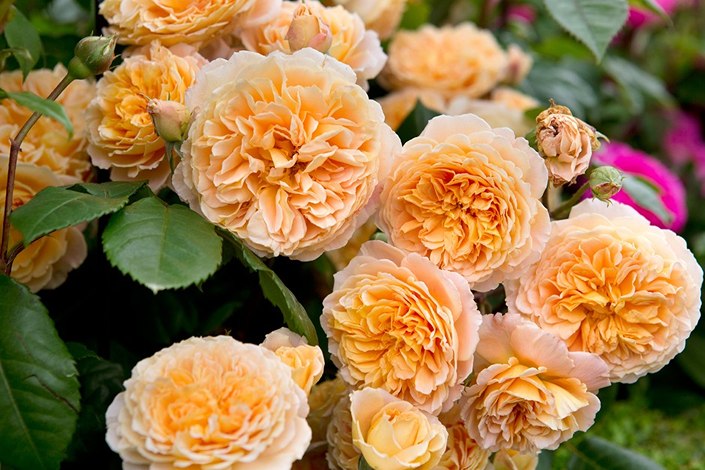
How to Propagate Climbing Roses
Propagating climbing roses is a simple and effective way to expand your rose garden. To propagate a climbing rose, take an 8-to-12-inch semi-ripe stem from the current year’s growth during late spring or summer. Make the cut just below a set of leaves and remove any flowers and leaves, leaving only one or two leaves at the top of the cutting. Prepare a small pot with a mixture of compost and perlite and create a hole in the center of the planting medium using a pencil. Dip the base of the cutting in rooting hormone and insert several inches of the stem into the pot, taking care not to rub off the rooting hormone. Gently firm the planting medium around the base of the cutting with your fingers and cover it with a humidity dome or plastic bag.
Monitor the cutting regularly, ensuring that the planting medium remains moist but not saturated. Look for signs of roots emerging from the drainage hole or perform a gentle tug test on a leaf. If there is resistance, it indicates that the cutting has successfully rooted. Once roots have developed, remove the humidity cover. After approximately nine months, the propagated stems will be ready for planting in the ground.
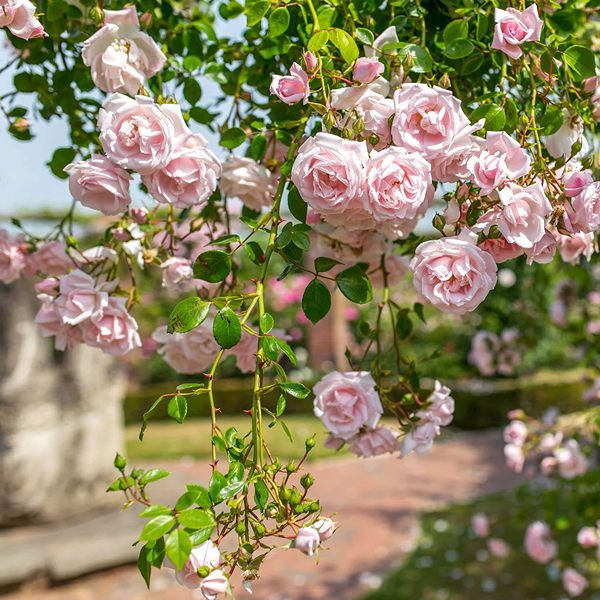
Climbing Rose Care and Maintenance
Climbing roses require care and maintenance similar to regular rose bushes. They thrive in full sun exposure for at least four to six hours a day, resulting in bigger and fuller groups of flowers. The soil should be rich, loamy, and well-draining, and can be supplemented with fertilizer or compost if necessary. Adequate watering is crucial, with approximately 2 gallons of water per plant per week, while avoiding overwatering to prevent root rot. Climbing roses prefer temperatures between 50ºF and 80ºF and may require shade during hot weather or coverage during frost. Pruning is necessary to maintain the health and shape of the plants, and potting climbing roses requires a large container with proper support and a suitable planting mix. Disease prevention, such as cleaning up old leaf debris and managing pests like aphids and Japanese beetles, is important for the overall health of climbing roses.



